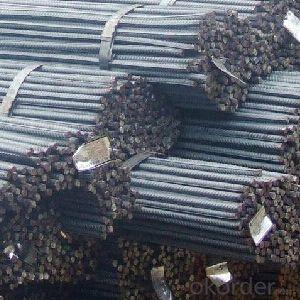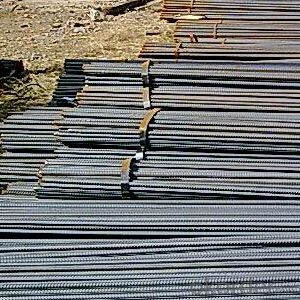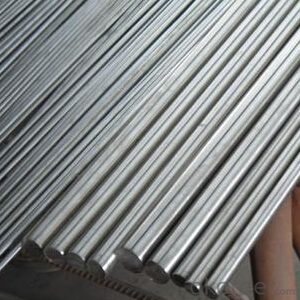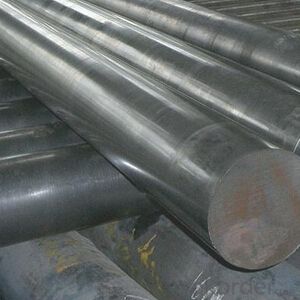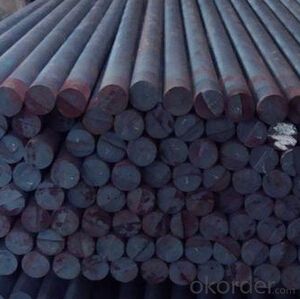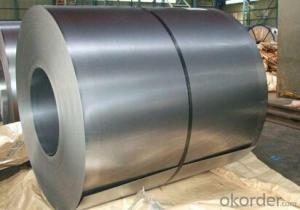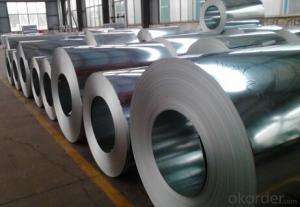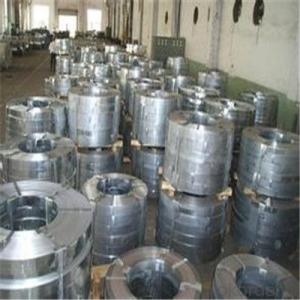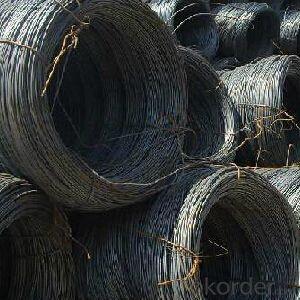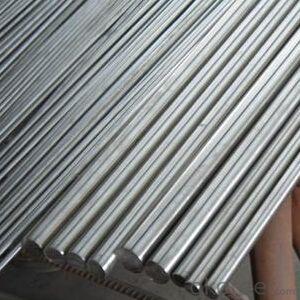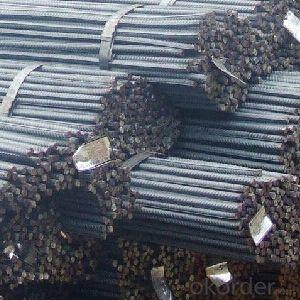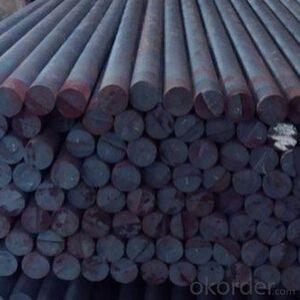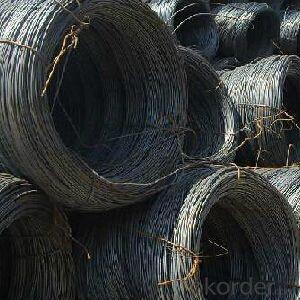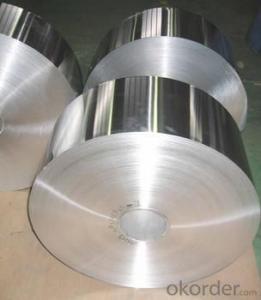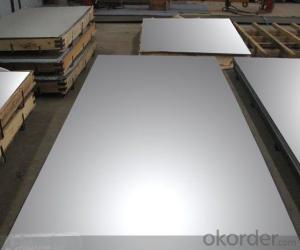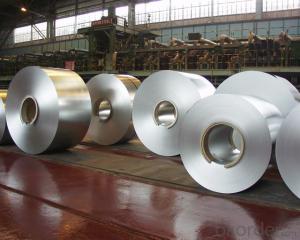The World's Best Rebar From Chines MILL
- Loading Port:
- Tianjin
- Payment Terms:
- TT OR LC
- Min Order Qty:
- 2666 m.t.
- Supply Capability:
- 5000 m.t./month
OKorder Service Pledge
OKorder Financial Service
You Might Also Like
1.Structure of Wire Rod Steel for Construction Description
the wire rod steel for construction that we offer have been used in civil construction work for years.
2.Main Features of the Wire Rod Steel for Construction
fasteners, bolts, rivets, screws,
general purpose wires,
electrode wires, industrial wires, agriculture wires,
bush wires, chain rivet wires,
detonator wire,
Umbrella ribs, upholstery wires, cycle spokes, needle wires, heald wires, staple pin Wire, safety pin wires
ACSR wires, earth wires,
tyre and hose reinforcement wires,
prestressed concrete wire, springs and rope wires,
card clothing wires,
vineyard wires,
ball bearing quality
Automobile parts like screw, fasteners, bush, spline, socket, connecting rod, shaft, gear, rivets, engine shaft, connecting rod, spindles, gears, etc.
3.Wire Rod Steel for Construction Images
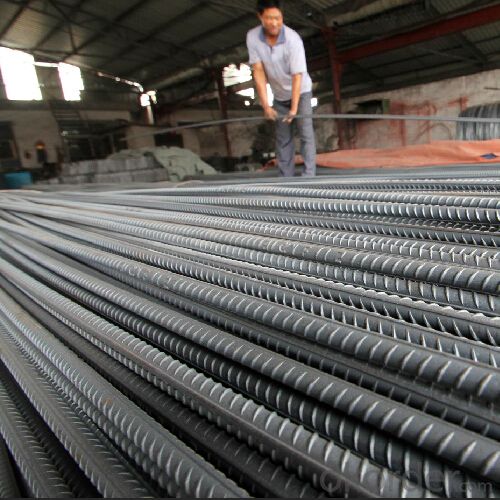
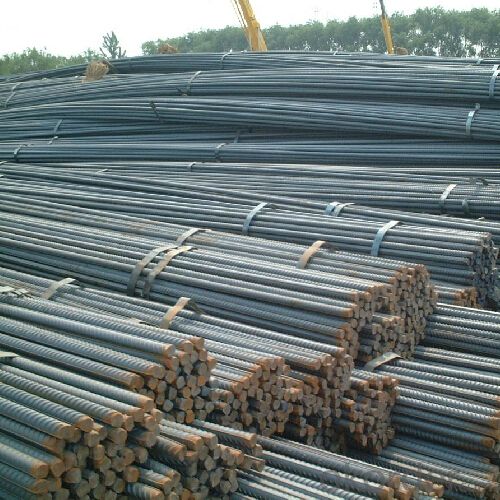
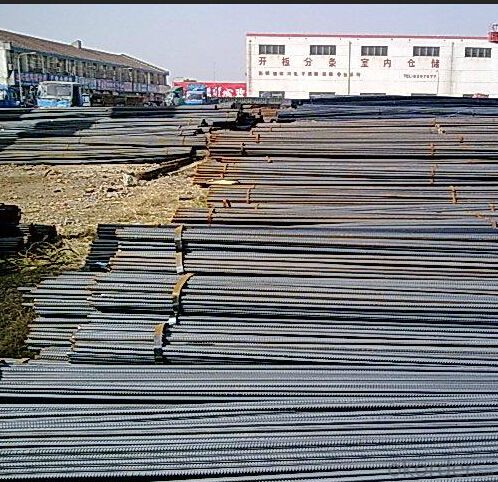
4.Wire Rod Steel for Construction Specification
Grade | Chemical Composition(%) | |||||
C | Mn | Si | S | P | B | |
SAE1006B | 0.03~O.07 | ≤0.32 | ≤0.30 | ≤0.045 | ≤0.040 | >0.0008 |
Mechanical properties | ||||||
Yield strength(N/mm2) | Tensile strength(N/mm2) | Elongation(%) | ||||
250-280 | 350-380 | ≥32 | ||||
Grade | Chemical Composition(%) | |||||
C | Mn | Si | S | P | B | |
SAE1008B | 0.10max | 0.3~O.50 | 0.15max | 0.050max | 0.040 max | 0.0008 min |
Mechanical properties | ||||||
Yield strength(N/mm2) | Tensile strength(N/mm2) | Elongation(%) | ||||
≥195 | 315-430 | ≥30 | ||||
5.FAQ of Wire Rod Steel for Construction
1.What is your minimum order quantity ?
Our MOQ is 500mt .
2.Please tell me the daily output and wire rod mill’s brand ?
Our daily output is 4000mt/day and our rolling mill from Germany’s SMS MEER
3.Which countries are your main sales?
Thanks to the professional international trade team, solid distribution channel and long – term cooperation customers, our market share in overseas realizes a tremendous growth, now we already became a main player in Middle East and South East Asia. Meanwhile, we are also the biggest supplier of Pre-painted galvanized steel coil in Philippines, Saudi Arabia, United Arab Emirates, Iran, Sudan etc.
- Q: Are steel strips suitable for cold working?
- Steel strips can be used for cold working, which involves shaping or forming the metal at room temperature or below its recrystallization temperature. Steel is a flexible and moldable material that can be cold worked through techniques like rolling, bending, drawing, and stamping. When steel strips are cold worked, it can lead to enhancements in surface finish, dimensional accuracy, and mechanical properties. Moreover, this process enables the creation of intricate shapes and precise tolerances. Nevertheless, the degree of cold working achievable by steel strips relies on the particular grade and composition of the steel, as well as the intended purpose and application.
- Q: How are steel strips stored to prevent contamination?
- Steel strips are typically stored in a controlled environment to prevent contamination. First and foremost, they are stored in a clean and dry area to minimize the risk of moisture and dust accumulation. This is important because moisture can cause corrosion, while dust particles can lead to surface imperfections. To further prevent contamination, steel strips are often wrapped in protective materials such as plastic or paper. These coverings act as a barrier, shielding the strips from direct contact with the surrounding environment. They also ensure that the steel remains free from any potential contaminants that may be present in the storage area. In addition to proper wrapping, steel strips may also be stored on racks or pallets to elevate them off the ground. This helps to prevent contact with any dirt or debris that may be on the floor, reducing the risk of contamination. Regular inspections and maintenance are also crucial in preventing contamination. Storage facilities should perform routine checks to ensure that the environment remains clean and free from any potential contaminants. Any signs of corrosion, moisture, or other contamination should be addressed immediately to prevent further damage to the steel strips. Overall, by implementing proper storage practices, such as maintaining a clean and dry environment, using protective coverings, elevating the strips off the ground, and conducting regular inspections, steel strips can be effectively stored to prevent contamination and maintain their quality.
- Q: Can steel strips be coated with a protective layer?
- Yes, steel strips can be coated with a protective layer. This is commonly done to enhance their durability and resistance to corrosion. The protective layer is typically applied through processes such as galvanization or painting. Galvanization involves applying a layer of zinc to the steel strip, which forms a protective barrier between the steel and its surrounding environment. Painting, on the other hand, involves applying a layer of paint or coating that acts as a barrier against moisture, chemicals, and other elements that could cause damage to the steel. These protective layers not only extend the lifespan of the steel strips but also provide additional aesthetic appeal.
- Q: How do steel strips respond to different forming processes?
- Steel strips can respond differently to various forming processes depending on factors such as the type and grade of steel, the specific forming technique used, and the desired outcome. Some common forming processes for steel strips include rolling, bending, stamping, and deep drawing. Each of these processes applies different levels of pressure, heat, or manipulation to the steel, resulting in various levels of deformation, shaping, or stretching. Steel strips can exhibit different responses to these processes, including changes in thickness, width, length, curvature, or overall shape. The response of steel strips to forming processes is influenced by their inherent properties, such as ductility, elasticity, and tensile strength, as well as the parameters and conditions of the forming process itself.
- Q: Are steel strips suitable for making musical instruments?
- Yes, steel strips can be suitable for making musical instruments, particularly for percussion instruments like xylophones or steel drums. They offer a unique sound and can be tuned to different pitches. However, for other instruments like string or wind instruments, other materials like wood or brass are more commonly used.
- Q: Are steel strips used in the production of metal brackets and supports?
- Yes, steel strips are commonly used in the production of metal brackets and supports. Steel strips are highly versatile and offer excellent strength and durability, making them ideal for constructing brackets and supports that need to bear heavy loads or provide structural stability.
- Q: How are steel strips used in the manufacturing of lighting fixtures?
- Steel strips are often used in the manufacturing of lighting fixtures for various purposes such as creating the framework, providing structural support, and forming decorative elements. They are commonly shaped, bent, and welded to form the desired shape or structure of the lighting fixture. Additionally, steel strips may also be used to hold and secure other components of the fixture, ensuring its overall stability and durability.
- Q: How are steel strips used in the manufacturing of automotive components?
- Steel strips are a crucial component in the manufacturing of automotive parts due to their versatility and durability. These strips are used in various ways throughout the automotive manufacturing process. Firstly, steel strips are commonly used in the production of body panels and structural components. They are cut and shaped to form the framework and outer shell of the vehicle, providing strength and rigidity. Steel's high tensile strength makes it ideal for withstanding the forces and impacts experienced by automobiles. Additionally, steel strips are used in the fabrication of automotive springs, such as suspension and clutch springs. These strips are formed into the desired shape and then heat-treated to achieve the desired elasticity and resilience. The use of steel strips ensures that these critical components can handle the weight of the vehicle and provide a smooth and comfortable ride. Moreover, steel strips are utilized in the manufacturing of automotive fasteners, such as nuts, bolts, and clips. These strips are stamped or machined into the required shapes and sizes, providing strong and secure connections between various automotive components. The durability of steel ensures that these fasteners can withstand the vibrations and forces experienced during vehicle operation. Furthermore, steel strips are used in the production of automotive exhaust systems. These strips are rolled, bent, and welded to form the pipes and tubing required for the exhaust system. Steel's resistance to high temperatures and corrosion makes it an ideal material for this application. Overall, steel strips play a vital role in the manufacturing of automotive components, offering strength, durability, and versatility. Whether used in body panels, springs, fasteners, or exhaust systems, steel strips contribute to the overall performance, safety, and longevity of automobiles.
- Q: How are steel strips used in the production of marine equipment?
- Due to their exceptional strength, durability, and corrosion resistance, steel strips find widespread use in the production of marine equipment. Carbon or stainless steel is typically employed in their manufacture, as these materials are well-suited for withstanding the harsh marine environment. One primary application of steel strips in marine equipment involves their use in constructing hulls and superstructures for ships and boats. The strips are shaped and welded together to form the vessel's framework. Steel's high tensile strength ensures the structural integrity of the hull, enabling it to withstand the forces exerted by waves, wind, and other external factors. In addition, steel strips are utilized in manufacturing various components such as propeller shafts, rudders, and bulkheads. These components necessitate materials possessing excellent mechanical properties to ensure efficient propulsion, maneuverability, and structural stability. Steel strips provide the required strength and resilience to endure the extreme forces and vibrations experienced during operation. Moreover, steel strips are used in fabricating marine equipment accessories, including brackets, supports, and fasteners. These accessories are essential for securing and connecting different components within marine equipment. Steel strips, characterized by their high strength and corrosion resistance, guarantee the reliability and longevity of these accessories, even in the challenging marine environment. Another significant application of steel strips lies in their role in constructing offshore structures, such as oil rigs, platforms, and subsea equipment. The strips are employed in fabricating the frameworks and supports for these structures, which must withstand harsh weather conditions, strong currents, and corrosive saltwater. Steel's robustness and resistance to corrosion make it an ideal choice for these demanding offshore applications. In conclusion, steel strips are critical in the production of marine equipment due to their ability to provide the necessary strength, durability, and corrosion resistance. They are employed in constructing hulls, superstructures, components, accessories, and offshore structures. The utilization of steel strips ensures the reliability, safety, and longevity of marine equipment, enabling it to endure the challenging conditions of the marine environment.
- Q: How do steel strips perform in fire-resistant applications?
- Steel strips perform well in fire-resistant applications due to their high melting point and excellent structural integrity. They are able to withstand high temperatures for extended periods of time without losing their strength or shape, making them ideal for use in fire-resistant construction materials such as fire doors, fireproof safes, and fire-rated walls. Additionally, steel strips have low thermal conductivity, which helps to minimize heat transfer during a fire, further enhancing their fire-resistant properties.
Send your message to us
The World's Best Rebar From Chines MILL
- Loading Port:
- Tianjin
- Payment Terms:
- TT OR LC
- Min Order Qty:
- 2666 m.t.
- Supply Capability:
- 5000 m.t./month
OKorder Service Pledge
OKorder Financial Service
Similar products
Hot products
Hot Searches
Related keywords
